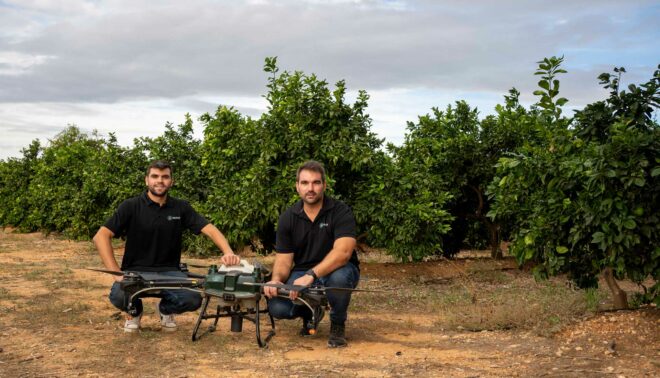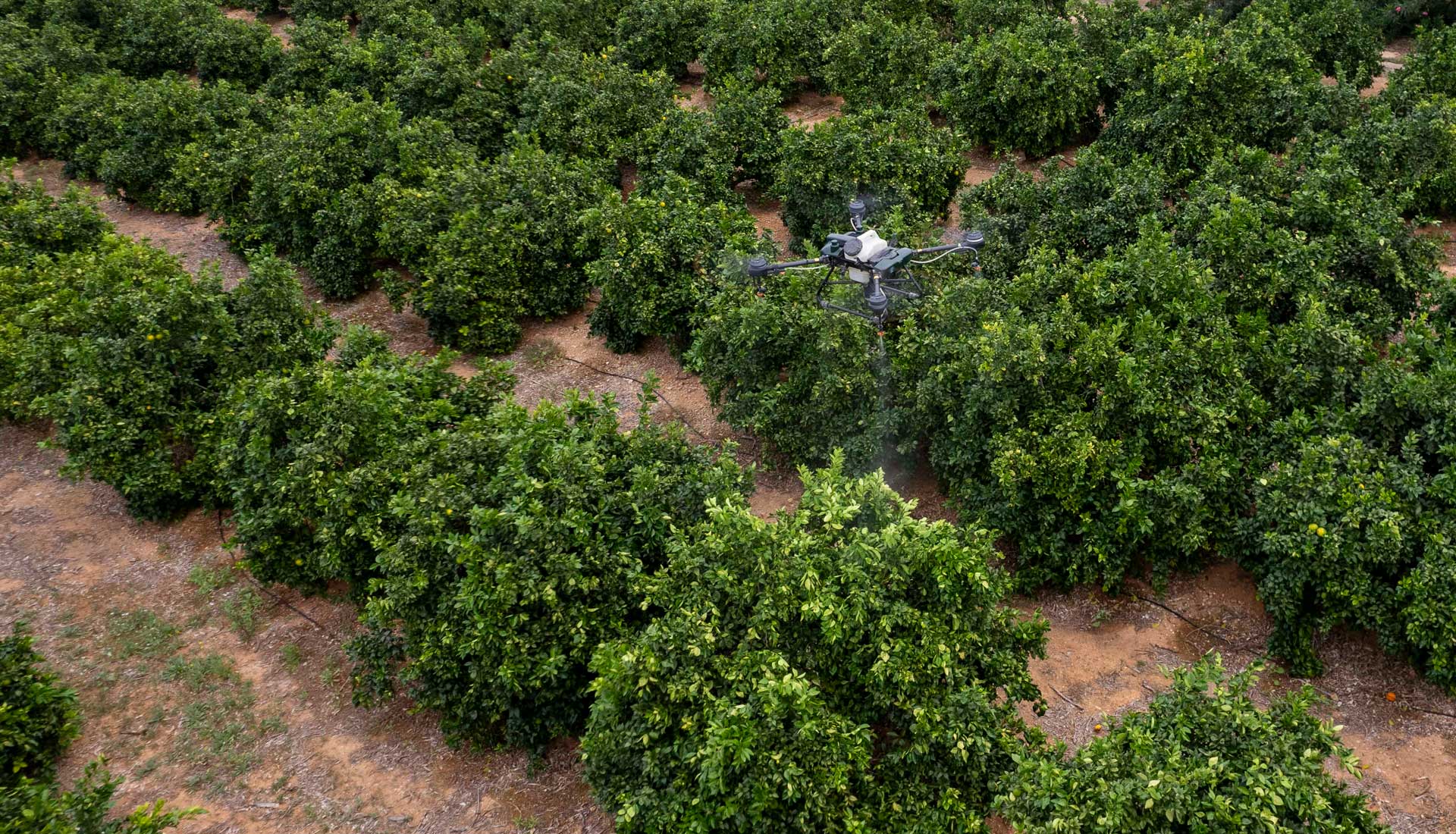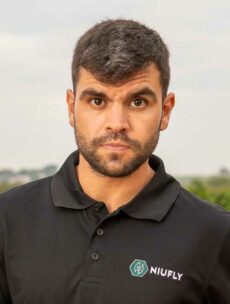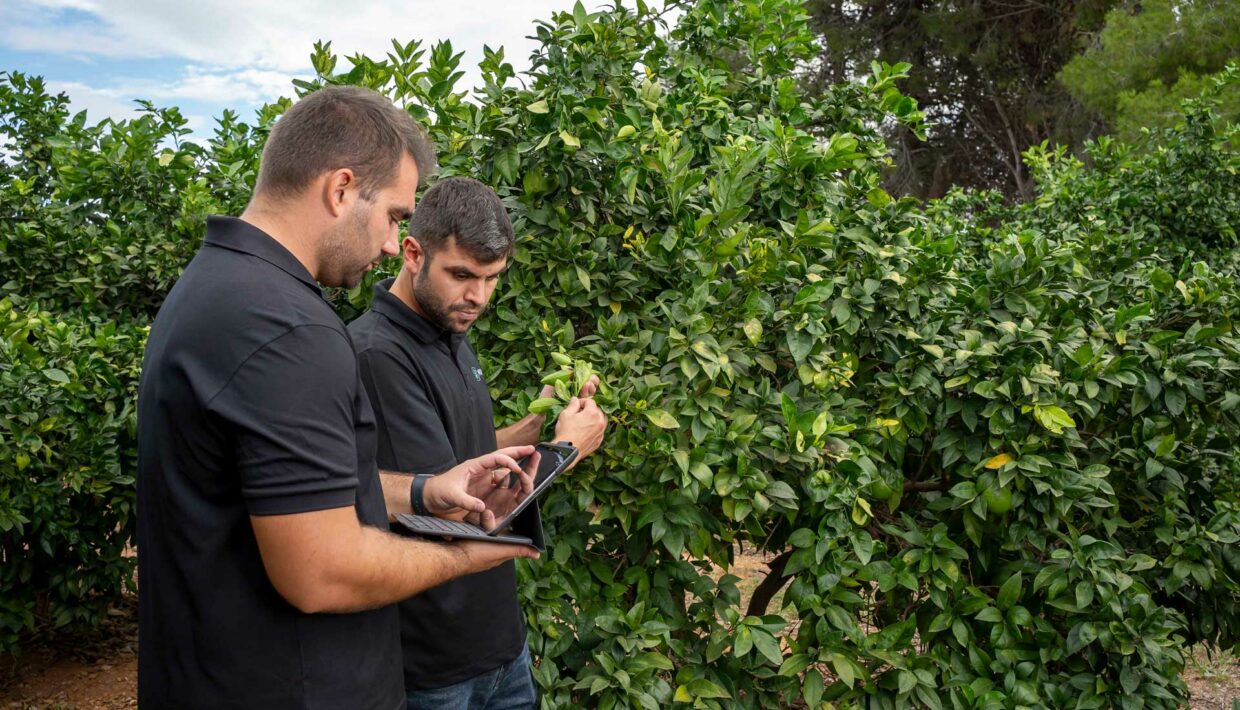Technically they are called Unmanned Aerial Vehicles (UAVs) or Remotely Piloted Aircraft (RPA), but users commonly refer to them as “drones”. And they have proven to be a formidable tool in the field of precision farming. Drones are able to provide highly significant data on the state of crops, which was unattainable until recently. They are now commonly used to monitor crop vigour, health status and to detect water stress. However, their use for spraying is not yet widely utilised, though it is gradually gaining ground.
Pedro Lucas is CEO of Niufly, a company that specialises in drone spraying, and says there are significant advantages. “Drones do not compact the soil, they adapt to any soil profile, they can work on steep or gentle slopes, they move faster across the field, and they can better match the treatment dose to the needs of the crop because the applications are low volume.”

Advantages of spraying with drones
Other advantages are that drones can easily reach areas that are difficult to access, like very muddy plots where machinery could get stuck, and waterlogged crops like rice. The operator is also less at risk from the chemicals being applied. From an environmental point of view, battery-powered drones do not emit pollutants during operation, which is another advantage over machines powered by combustion engines.
But drift, in which the droplets move through the air and do not reach their target, is more controversial. A study carried out by the University of Seville in intensive olive groves found that spraying with a drone produced less drift than using a conventional sprayer. However, other studies have shown that drift can be the same or greater with drones. “To avoid drift, it’s essential to set up the drone correctly and to only spray in the right environmental conditions,” says Pedro.

Challenges and constraints
The main problem with drone spraying is the restriction imposed by European regulations. Since 2009, aerial spraying has been banned in the EU. However, there are a few exceptions with special permits. In addition, the European Commission has set a target to halve the use of chemical pesticides by 2030.
To resolve this situation, there is talk of the need for a new law that regulates drone treatments more specifically, as the current regulation was made with aerial treatments carried out by planes and helicopters in mind. Although phytosanitary treatments with drones are very restricted and require special permits, other products can be more easily applied.

The first growth stages are ideal for drone treatments, due to the lower leaf mass.
David Blanco
“We apply solid products like granulated fertiliser and biological control agents, which are approved, as well as liquid products like diluted fertilisers, biostimulants, bio-insecticides and bio-fungicides, which are not classified as phytosanitary products,” says Pedro. In terms of phytosanitary products with specific authorisations, Pedro has carried out authorised treatments against rice blight and fruit flies with products that can be applied from the air.
Key aspects
To see how spraying by drone is done, we travelled to an orange grove in Valencia to be treated with a biostimulant. According to David Blanco, Niufly’s technical operations manager, it is essential to have an accurate diagnosis and analysis of the plots to be treated so that the spraying can be carried out correctly. “We always digitise the plot with RTK, analyse the data thoroughly to define the treatment, and then configure the task correctly so the drone works automatically,” he explains.

“First we do a remote sensing flight at an altitude of 80-120m. We use drones equipped with thermal, multi-spectral and RGB sensors to assess the crop as accurately as possible, and use the data to decide which areas to spray and what dose to apply.” In a single day they can assess up to 300ha. They also collect leaf and soil samples, the analysis of which complements the remote sensing data and allows the development of more accurate algorithms for pest and disease incidence. Once the task has been configured, the drones will be flown for spraying.

With drone treatments, soil compaction is avoided.
Pedro Lucas
We use four-propeller drones with an eight-litre tank,” says David. “This gives us of six to eight minutes of autonomous effective spraying, allowing us to spray up to 60ha per day. In the two treatments we have carried out with authorised pesticides the dose has been 8 litres/ha.”
Woody and herbaceous crops are cultivated in completely different ways. In woody crops the planting line must be respected while in herbaceous crops a uniform application over the entire area must be achieved. In Pedro’s experience, early growth stages are ideal for drone treatments, because of the lower leaf mass. It is here that the highest efficiency is achieved, as long as the other variables (height, speed, applied volume and droplet size) are also correct.

Closing the cycle
One thing Niufly has pioneered is the aerial release of biological control agents, although technically this is not considered spraying as it is a solid product being applied. In order to distribute these ‘good bugs’, which help in the fight against pests and diseases, they have modified the drones to allow for controlled release, ensuring proper distribution where needed.

Regardless of whether a liquid or solid product is applied, correct maintenance of the drones after treatment is vital. The gears, pumps, connectors, and everything else has to be cleaned so that the drone is in the best possible condition for the next treatment.
To ensure the efficacy of the treatment, a thorough and detailed follow-up should be carried out afterwards. This is done with remote sensing flights and by increasing the number of samples taken in the field. In this way, Pedro and David can reassess the health status of the crop and obtain agronomic insights, producing small and large-scale maps of crop vigour or production forecasts.
